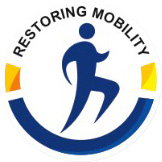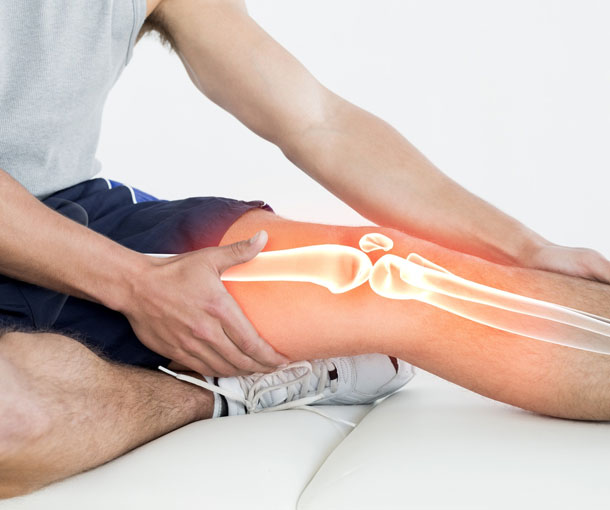Sports Injuries
What are Sports injuries?
Sports injuries are a broad category of injuries that may occur in numerous sections of the body as a result of rigorous activity such as sports. Certain regions of the body are more vulnerable to injury from sports injuries. The top eight most prevalent forms of sports injuries are listed below. More than 80% of all sports injuries fall into one of the top three categories (Runner’s Knee, Shoulder Injury, and Ankle Sprain).
Runner’s Knee: The most prevalent form of sports injury is the runner’s knee. Runners, bikers, and swimmers are the most usually affected, as are persons who do aerobics, play football, basketball, and volleyball. Overuse of the knee causes irritation of the tendon under the kneecap, resulting in this condition.
Knee Ligament Injuries (ACL Tear/MCL Tear/PCL Tear/Meniscus Tear): Knee injuries may occur as a consequence of a direct strike to the knee, a fall, or landing on a flexed knee. These are most common to footballers. These usually affect the ligaments that connect two of the knee bones – the anterior cruciate ligament (ACL), the medial cruciate ligament (MCL), or the posterior cruciate ligament (PCL) (PCL).
Shoulder Injury (Rotator Cuff Tear): These injuries are common in sports such as tennis, swimming, and volleyball. Overuse of the shoulder, which loosens the rotator cuff, is the primary cause of many issues (a group of tendons and muscles around the shoulder).
Ankle Sprains: Ankle sprains are prevalent in sports that require leaping, sprinting, or twisting fast (e.g., playing football, basketball etc). Such action may cause an ankle to twist and perhaps rupture a tendon or ligament.
Tennis/Elbow: Golfer’s Tennis Elbow is caused by tendon degeneration in the elbow as a result of repetitive backhand strokes in tennis. This condition leads to pain on the outside of the elbow. Golfers’ elbows occur as a result of the inflammation of the muscles involved for forearm flexion.
Shin Splints are pains on the inside of the shinbone produced by inflammation of the surrounding muscles. These are especially common in sedentary persons who begin working out and raise their intensity too quickly.
Groin strain is a strain of the adductor muscles, which are located in the upper thigh and serve to bring the legs together, causing severe discomfort and swelling on the inside of the thigh. This usually happens when one changes directions suddenly while running.
Hamstring Strain: The hamstrings are the muscles located behind the thighs. Hamstring strains are most usually caused by insufficient warming up or extreme weariness.
What are the Prevention of Sports Injuries
- One of the simplest, but most significant, preventative techniques for sports injuries is to wear the proper shoes and insoles and to replace them on a regular basis when they wear out.
- Running on a softer surface, such as an indoor track, rather on the road or pavement, may also help to avoid a variety of ailments.
- To avoid shoulder injuries, it is essential to develop your muscles with weight training before participating in strenuous sports.
- Always stretch before and after exercising, and avoid working out when you are weak or weary.
- Never return to athletics until your injury has completely healed. Resuming activity too soon might result in persistent problems.
What is the treatment for Sports Injuries?
Medicines/Pharmacotherapy: Conservative therapy (e.g., resting the affected portion, using hot/cold packs) combined with medications, such as nonsteroidal anti-inflammatory drugs (NSAIDs), and the addition of a neuropathic agent in cases of chronic pain, is one of the simplest strategies for pain management.
Braces: Depending on the location of the injury, various braces (e.g., thigh brace, elbow brace, arch brace, wrist brace, ankle brace, or knee brace) may be used to limit the mobility of the afflicted area, reduce discomfort, and speed recovery.
Injections: In circumstances when medications have failed, intralesional injections into the afflicted area may give considerable pain relief. For best effects, such interventional treatments should be supplemented with regular stretching and exercise.
Platelet Rich Plasma (PRP) Treatment: PRP therapy includes injecting platelets from the patient’s own blood into a damaged tendon or cartilage to restore it. It has been effective not only in alleviating pain but also in accelerating the healing process. The patient’s blood is drawn and placed in a centrifuge for 15 minutes to separate out the platelets. The platelet-rich plasma is then injected into the injured tendon or cartilage.
PRP has been utilized effectively to treat a variety of sports injury ailments, including golfer’s elbow, tennis elbow, shoulder injury, and knee ligament injuries (ACL tear, PCL tear, meniscus tear).

